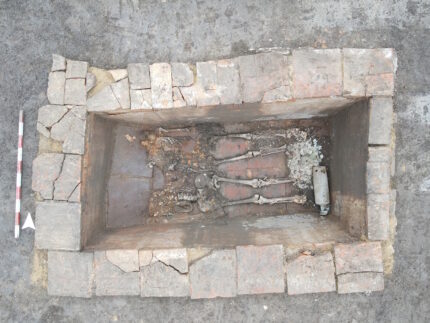 Two Roman-era graves with rich grave goods including a rare bronze medallion of the emperor Caracalla have been discovered in Nova Varbovka, Bulgaria. One is a double burial of an adult man and a woman, the other of a young child, suggesting these graves were a family grouping. The artifacts found inside the graves date them to the first half of the 3rd century.
Two Roman-era graves with rich grave goods including a rare bronze medallion of the emperor Caracalla have been discovered in Nova Varbovka, Bulgaria. One is a double burial of an adult man and a woman, the other of a young child, suggesting these graves were a family grouping. The artifacts found inside the graves date them to the first half of the 3rd century.
The burials were discovered last fall by a tractor driver when he hit a limestone slab while plowing a field near Nova Varbovka. He saw the human remains but didn’t realize they were archaeological in nature, so he reported the find to the mayor who reported it to the police thinking it might be a criminal matter. When the remains were examined by archaeologists from the Veliko Tarnovo Regional Museum of History, they were found to be from the Roman era and an emergency archaeological salvage excavation was launched. The dig took place in December 2023.
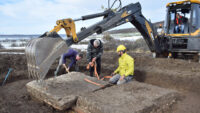 The excavation revealed two large graves built of brick masonry with plaster on the interior walls. They were covered with heavy slabs of limestone. The larger of the two was ten feet long and contained the remains of a woman about 45-49 years of age and a man of about 50-60 at the time of their deaths. The child was just two or three years old when he died and his grave is a little earlier than theirs, so he must have predeceased them.
The excavation revealed two large graves built of brick masonry with plaster on the interior walls. They were covered with heavy slabs of limestone. The larger of the two was ten feet long and contained the remains of a woman about 45-49 years of age and a man of about 50-60 at the time of their deaths. The child was just two or three years old when he died and his grave is a little earlier than theirs, so he must have predeceased them.
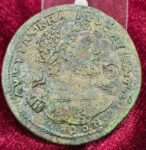
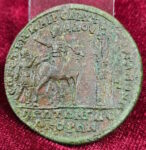 The parents’ grave contained a pair of gold ladies earrings, a gilt pendant with a glass bead, a necklace of lapis lazuli and gold, a silver-plated fibula. The child was buried with a pair of gold earrings, glass bead jewelry, a ceramic wine amphora, two delicate glass lacrimaria (small vessels containing perfumes or unguents) and the bronze medallion issued by Emperor Caracalla (r. 198-217 A.D.) to commemorate his visit to the Pergamon’s Temple of Asclepius in 214 A.D.
The parents’ grave contained a pair of gold ladies earrings, a gilt pendant with a glass bead, a necklace of lapis lazuli and gold, a silver-plated fibula. The child was buried with a pair of gold earrings, glass bead jewelry, a ceramic wine amphora, two delicate glass lacrimaria (small vessels containing perfumes or unguents) and the bronze medallion issued by Emperor Caracalla (r. 198-217 A.D.) to commemorate his visit to the Pergamon’s Temple of Asclepius in 214 A.D.
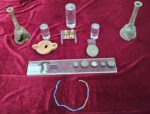
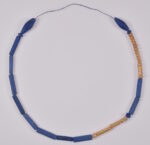 The expensive burial facilities and grave goods were only affordable for the very rich in this time and place. Some of the limestone came from a quarry near Nicopolis ad Istrum, a Roman city about 25 miles southwest of Nova Varbovka founded by Trajan in the early 2nd century. Archaeologists hypothesize the adults were wealthy landowners from Nicopolis ad Istrum who had a villa rustica (country estate) where they spent their summers.
The expensive burial facilities and grave goods were only affordable for the very rich in this time and place. Some of the limestone came from a quarry near Nicopolis ad Istrum, a Roman city about 25 miles southwest of Nova Varbovka founded by Trajan in the early 2nd century. Archaeologists hypothesize the adults were wealthy landowners from Nicopolis ad Istrum who had a villa rustica (country estate) where they spent their summers.
Chakarov, who excavated the burials along with colleagues Nedko Elenski and Mihaela Tomanova, noted that the Caracalla medallion could point to an Asia Minor origin for the occupants of the graves, which would be consistent with the fact that Nicopolis ad Istrum was built mainly by settlers from Asia Minor. “Of course, we are searching for an opportunity to make DNA and other analyses which our museum can’t afford, to see if this hypothesis is correct,” Chakarov said.